The valley can create an unusual and charming corner in any garden. We are accustomed to meeting this plant on forest edges. But this plant can be hosted and at home. The pretty fragrant lily of the valley in the garden is a traditional satellite of the early spring, time of change and new events. The valley is a rather selfish flower for which it is very difficult to choose the "neighbors". In some regions of Russia, there is an interesting belief about the valley. Since ancient times it was believed that in the place where this forest plant grows, there is no place for evil, bad thoughts and actions. Thus, the valley attached to the Lily of the Peacega and the defender of the family from the evil eye, damage. The valley landed near the entrance to the site, under the windows, not far from the porch, benches. In this article we will talk about the possible difficulties that gardeners can face, the secrets of growing the valley, landing and care for them
Lily of the valley. Description
- Lily of the valley bloom at the end of spring or early summer.
- Lily bloom lasts about 14-17 days.
- The root system of the valley is represented by a thin and fluttering rhizome.
- The leaves in the valley are oblong and oval. On one plant, they can be from 1 to 5.
- The leaves of the valley have a beautiful and bright green color that attracts attention.
- The fragrant flowers of the valley are collected in small inflorescences of 5-15 pieces. The flower is represented in the form of an outbound bell tall of about 4 mm. The width of the bell is about 5 mm.
- Fruit of lily of the valley - a berry of a red or brick color with seeds inside. Berry, like all other parts of the plant, is a poisonous.
Curious facts about valley
- Lily of the Lily of the people are also called the "Mode", "Lupusnik", "Gladshom", "Silvernik".
- There are many legends about the appearance of this charming plant. According to one of them, the valley appeared from the tears of the sea princess. Tsarevna called Volkhov. She dust loved the young man named Sadko, but soon he learned about his treason with Lyubava. Water Tsarevna came out of the water to enjoy the last time by the songs of his chosen. After long searches, she discovered it, but in the arms of Lyubava. Volkhova proudly turned back, and the bitter tears were poured out of her eye, which turned into flawless flowers, named after the valley. It is this plant that is a symbol of tenderness, unrequited love.
- In Ireland, Lrangess flowers in the legends are steps of stairs for fairies. It is on such steps that the tiny fairies climb the cane, and then fly from it the cradle.
- It is believed that nightingales begin their trills, having heard the amazing smell of the valley.
- In some legends it is said that the valley are miniature lanterns of fabulous gnomes who live in the forest and hide from human eyes.
- Flowers of the valley in some believers are considered to be pearls, of which there is a laughter of the mythical mermaid.
- The word "Lily of Lily" in Latin means "Lily Valley, blooming in May".
- The valley is a satellite flower for those people who were born in the interval from May 1 to 10.
Useful properties and application of valley
The composition of the valley
You may be surprised at how much rich is the chemical composition of the valley. It is due to such a composition that this plant has been widely used in medicine. Among the beneficial components contained in the valley, you can allocate:
- heart glycosides;
- flavonoids;
- apple and citric acid;
- saponins;
- starch;
- sahara;
- essential oil;
- kumarina;
- alkaloids;
- ash.
Each of these components, with proper and appropriate use, can have a healing effect on the human body. Since ancient times, people carefully and respected to this plant, giving it great importance in the treatment of certain diseases and ailments.
Useful properties of Lrangeis
Depending on which dotd formas are used by Lily of Lily, it can have the following types of impact on the human body:
- fighting various inflammatory processes;
- the ability to bring bile from the body;
- reducing pain syndrome;
- extension of vessels;
- the ability to have a beneficial effect on the human nervous system;
- ability to eliminate excessive fluid from the body, reducing the ethnicity;
- the ability to exert the antipyretic effect on the human body at ARZ;
- the proven ability to have a beneficial effect on the work of the heart and in particular on the muscle of myocardium.
This is not all kinds of useful influence of the valley on the human body. This plant can be used to treat such diseases such as hypertension, headaches, atherosclerosis, cardiovascular disease, insomnia, problems with thyroid gland, bronchial asthma, cholecystitis and others.
Lily of the Lily of Folk Medicine
- Cooking infusion from the valley. Such a healing infusion can be used both for adopting inside and externally as anti-inflammatory missions. For the preparation of infusion you will need 1 ppm. Lily of the valley pour 1 cup of boiling water. Let it implant with a solution for 30 minutes, and then strain.
- Preparation of tiny tincture. The tinctures differ from the infusion that alcohol is used for their preparation. Mix 1 part of the prepared valley raw materials and 10 parts of alcohol. It is advisable to do and store a tincture in glassware. Let it be laid in a dark place for 14 days, and then strain. Use such a healing tincture as a calming agent, to combat sleep impairment, for diseases of the cardiovascular system.
Anyone, even the most harmless, the remedy with the valley in the composition should be used only after consulting a doctor! Apply any drugs and recipes from traditional medicine with medicinal herbs in the treatment of children is strictly prohibited.
How to harvest the valley
If you decide to independently collect the valley, remember that this plant in many countries is listed in the Red Book, and the raw material should be harvested in accordance with the rules and only in small quantities.
- In order to properly harvest the raw materials, you will need a sharp knife. It is impossible to pull out plants with rhizome. You need to carefully cut the above-ground part or simply flowers.
- Flowers of the valley are collected at the very beginning of flowering, when the concentration of nutrients most maximal. The leaves are collected approximately 14 days before the start of flowering.
- It is possible to collect the valley in the same place not earlier than in 2 years. It is so much time will need a plant to recover.
- Cut flowers or leaves need to be dried immediately. For this you can use special dryers. You can simply decor the valley on any surface with good access of solar set and fresh air.
- Store raw materials advise in paper bags. The shelf life of independently collected raw materials is about 2 years.
Lily of the valley. Sorta
Traditionally it is believed that the genus of the valley monotype, i.e. Submitted by one type of Lily Maysky. But recently, some varieties of Lrangess Maysky are increasingly distinguished into separate species. Each of the three species of the valley has geographical chopping and some features of the structure.
Lily of Maysky
Lily of Mayan is a rather common plant in the northern hemispheres. It can often be found on forest edges, glades, in mixed, deciduous forests of Russia, North America, Malaya Asia, China. The peculiarities of the appearance and structure are:
- lily of Maysky is able to reach a height of 30 cm;
- lily of Mayski - a grassy plant;
- lily of Maysky - a plant is poisonous;
- lily of Mayan has a horizontally directed and creeping rhizome;
- the leaves of the Lily of the Lily of Mays have a wide and elongated shape with smooth edges;
- flowers of the Lily of the Lily of Mays are presented in the form of bells up to 5 mm in diameter;
- the period of flowering in Lrangess Maysky begins at the end of May or early June;
- approximately in the middle of summer, Lily of Maysky starts fruit. The fruit is red with an orange tint of a berry. In diameter, it reaches 7-8 mm in diameter and has 2 seeds inside. Berries, like all parts of the valley, poisonous;
- lily of Mayan can multiply by seeds and rhizome. With a seed breeding method, bloom comes on the 7th year.
Lily of Mayan has several varieties. Among the most popular varieties can be listed:
- "Albister"
- "Albostriate"
- "Proliferant"
- "Rosea"
- Fints Gians
- "Harwick Hall"
- "Grandiflower".
Lily of Kazke
Lily of Kazek received his unusual name in honor of the Japanese botany Casuka ITO. This variety is also called the Lily of the Far Eastern or Lily of Cases. Many scientists consider this kind of synonym for Lrangee Maysky. But this specification has its own features:
- lily of Kazka belongs to the Sparazhev family;
- the first description of this variety of valley in the literature was in 1867;
- widespread in the southeastern part of Siberia, Japan;
- lily of Kazka can be found in the meadows, in deciduous forests, as well as in mixed forests;
- the period of flowering of the valley Kazka depends on the place of growth and on specific climatic conditions;
- lily of Kazka reaches 15-18 cm in height;
- the leaves of the Lolannisha Kazka can be with a brown or even purple tint. You can also meet plants with extensive green leaves;
- all parts of the valley Kazka are poisonous.
Lily Gorna
Lily of the Lily of Mountains as well as the Lily of Kazka, often refer to Lily Maysky. But sometimes it is still distinguished in a separate type, which has some features:
- belongs Mountain Lily of the Sparazhev family;
- the most distinguished place of the growth of the valley Mountains is the Mountains of Appalachi, some US states;
- lily of the Lily of the Mountain can grow both in small groups, and scattered;
- each plant has 2-3 sheets;
- flowers in the valley mountain have a classic shape of the bell. On each plant such flowers can be from 5 to 15 pieces;
- lily of the Lily of Mountain Fruit. The fruit is a poisonous red berry;
- in some regions where the Lily of Lily Mountain grows, it was recognized as an endback and rare species.
Lrangessi. Photo
Landscaped technology
Choose the landing time of the valley
How to plant the valley? There are two ways to landing the valley:
- landing in autumn;
- landing in the spring.
But most of the gardeners are still advised to choose the autumn way of planting. It usually happens from the beginning of September to the beginning of November.
Choose a plot and prepare the ground for the valley
Responsibly and with all seriousness, come to the question of choosing the landing site of the Lrangess. The flower has the following preferences:
- the place must be shady, but not too. The valley love shadows, but with the complete absence of sunlight you can not see elegant bells;
- choose a place under the scattered crowns of trees that will pass the sun's rays;
- the valley does not like strong winds. Think about how to avoid drafts if they are on your site;
- the valley prefers well-moistened and enriched with organic soil;
- the soil at the landing site of the valley should not be very acidic. To reduce the existing acidity of experienced gardeners, they advise on deep steaming lime in the calculation of 200-300 grams per 1 sq. M;
- in order to enrich the soil as much as possible and make it more favorable for the valley, there are also compost or humus in the calculation of 10 kg per 1 sq.m, superphosphate per 100 grams of 1 sq.m and 40 grams of potassium sulfate to 1 sq.m.
Experienced gardeners also advise to carry out all the preparatory activities with the soil to landing the valley in the spring, if you plan to plant them in autumn.
Landing Lily
If autumn you have prepared well prepared the ground, carefully skew the site, the landing of the valley can be produced in spring. But most of the gardeners are inclined to believe that the valley planted in spring times are harder to come true, are less resistant to diseases and adverse environmental conditions. Landmark landing technology includes the following steps:
- make grooves on the prepared land plot. The depth of the grooves depends on the size of the root of the valley;
- plant plants at a minimum distance from each other at 10 cm, and between the rows - 25 cm;
- place the plant in the groove so that the rhizome is placed in a vertical position;
- when landing the valley sprouts are plugged at a maximum of 2 cm;
- lily of the valley must be poured after landing. If the soil is very dry, the amount of water should be greater.
Many gardeners are concerned about how soon the lilies planted falling in the fall. If you planted plants that already have flower kidney, then charming bells will decorate your site for the next year.
Lrangessi. Care
Lilies are very comfortable and practical for growing plants. This flower will require you a minimum of care. If you gathered to grow the valley in your area, then read the main recommendations for the care of them:
- after the valley rooted, they can be safely started to feed any organic plants. It may be manure, and compost;
- mineral fertilizers for feeding valves will be useful only after 1 year after their landing;
- lily Shel is a plant that loves moisture. With insufficient soil moisture, the flowering period may not come. If the ground on your site is very dry, or the summer was extremely dry, then do not forget to periodically water the valley;
- lilies love lung and loose land. Periodically loose the soil on a small depth, not the assigant root system;
- the valley will have a neat appearance only under the condition of timely weeding. Getting rid of weeds is a mandatory care element for any garden plants;
- no preparation for winter valleys do not require. Of course, if you purchased a special selection variety, pay attention to the Growing Tips. Most of the valley frost resistant and beautifully winter without covering. Some gardeners advise in the first winter after planting to make a small mulch layer to avoid possible consequences for faster plants from a honest winter.
It is worth paying special attention to the safety rules when making any actions with the valley. Remember that all parts of this cute plant is poisonous. It is advisable to work in gloves. The valley is rarely sled in areas where little children are often there. Red and very attractive berries are very sitting and attracting children's eyes.
Reproduction of Lrangeis
Reproduction of the valley seed method
Lilies can be multiplied by seeds. But this method is quite rarely used. Plants are difficult to ride and grow very long. If you decide to take advantage of a similar method, then be patient and time.
- Lrangee Seeds need to subjected to stratification 2 months before the expected landing. This step will increase the germination of seeds.
- Prepare a nutritious and loose soil.
- Seeds are plugged by approximately 2 cm and with a minimum distance between plants at 12-15 cm.
You can land seeds as immediately in open soil and in boxes for growing seedlings. Experienced gardeners argue that the germination of seeds does not change from choosing a fit way.
Reproduction of the lilies of the valve
If you do not want to expect the Lily of the Lily of the Lily of the Lilyside, you can use the fission method of rhizome.
- In August-September, dig up the rhizomes.
- Sort good sprouts to transfers.
- The optimal for the transplant is the sprout with the kidneys of a stupid form at the top, and not pointed.
- Plant new plants in the prepared pits. The composition of the soil, landing depth and all the technology generally does not differ from the technology at the initial landing of the valley.
Lilies after flowering
The flowering period of the valley begins in the late spring and ends at the beginning of summer. But do not think that the plants lose their attractiveness and decorativeness. Throughout the summer, the valley continues to decorate your plot with beautiful green leaves. One of the shortcomings of the valley on the site is their ability to "capture" territory. Rhizomes grow very quickly, plants multiply by self-sow. Experienced gardeners advise the landings of the Lily of the slate lines, for example.
When to transplant the valley
You may want to transplant the valley to a new place of growth. But do not think that everything is so simple. Lily of the valley - plants loving constancy. Before you start the landing of the valley in your site, think well about choosing the place of growth. It is desirable that this place is their constant "home" for several years. If without transplanting can not do, it is better to conduct it at the beginning or middle of the autumn. Of course, the soil must be well prepared and fertilized, carefully repaired.
For valley garden landing and care do not represent much difficult. Once, putting this plant in its plot, you will admire the delicious colors every spring. In addition, this plant can be your faithful assistant in the treatment of some ailments. Successes in the cultivation of the valley at the cottage or at the nice site!

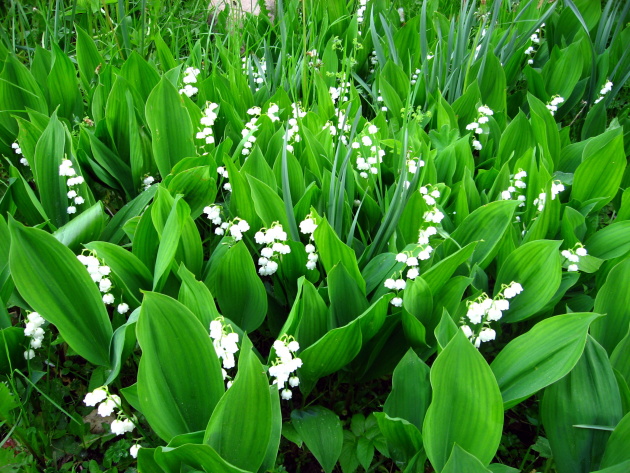
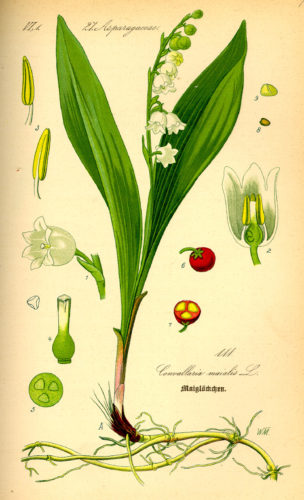
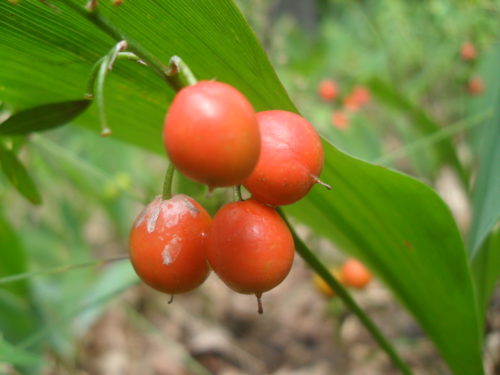
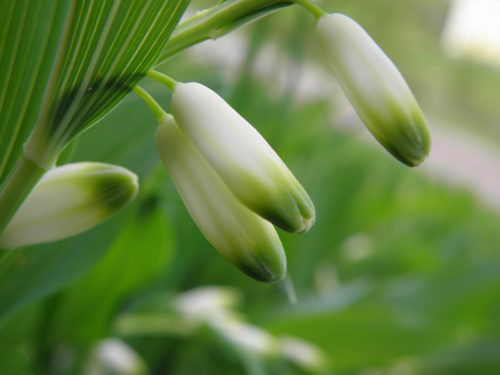
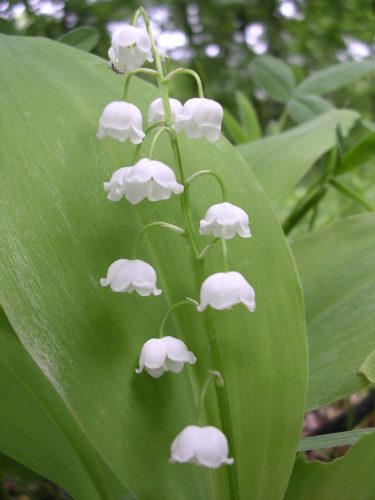
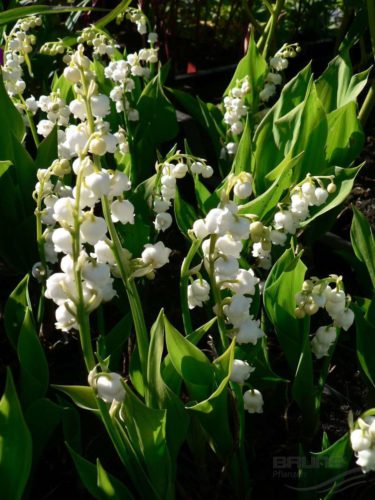

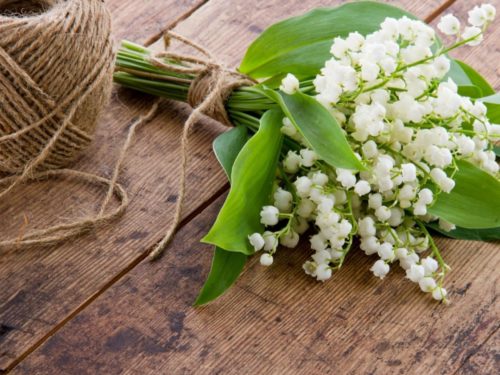

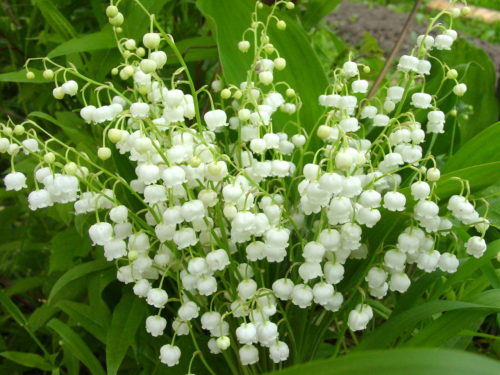
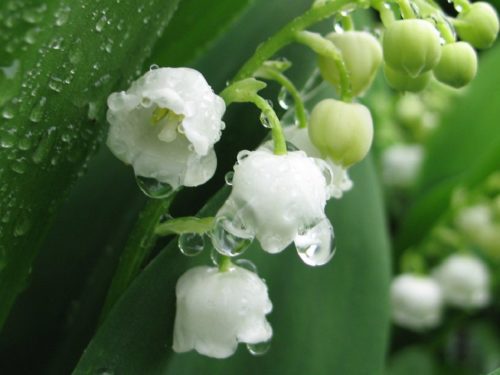
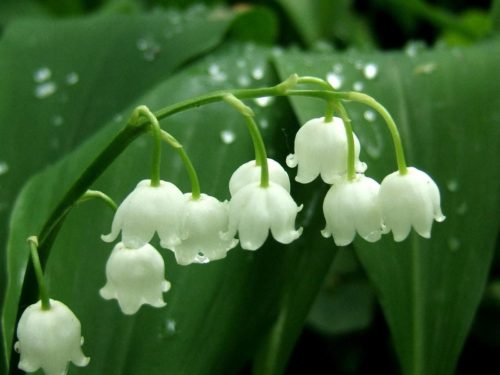
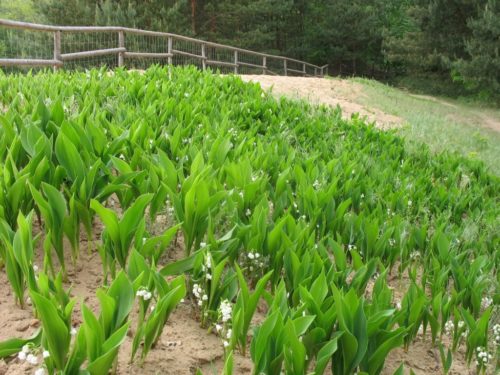
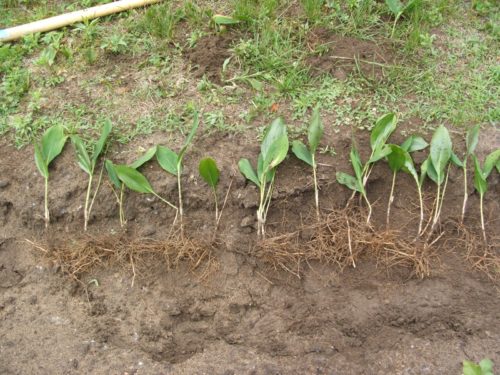
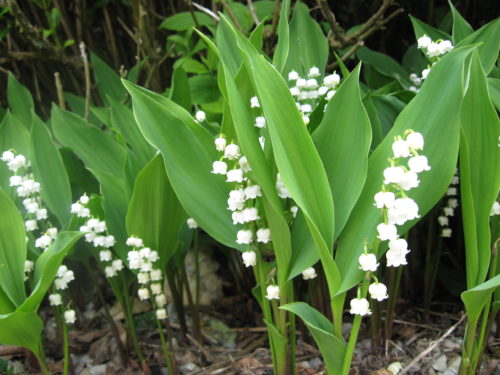












 Start a discussion ...
Start a discussion ...